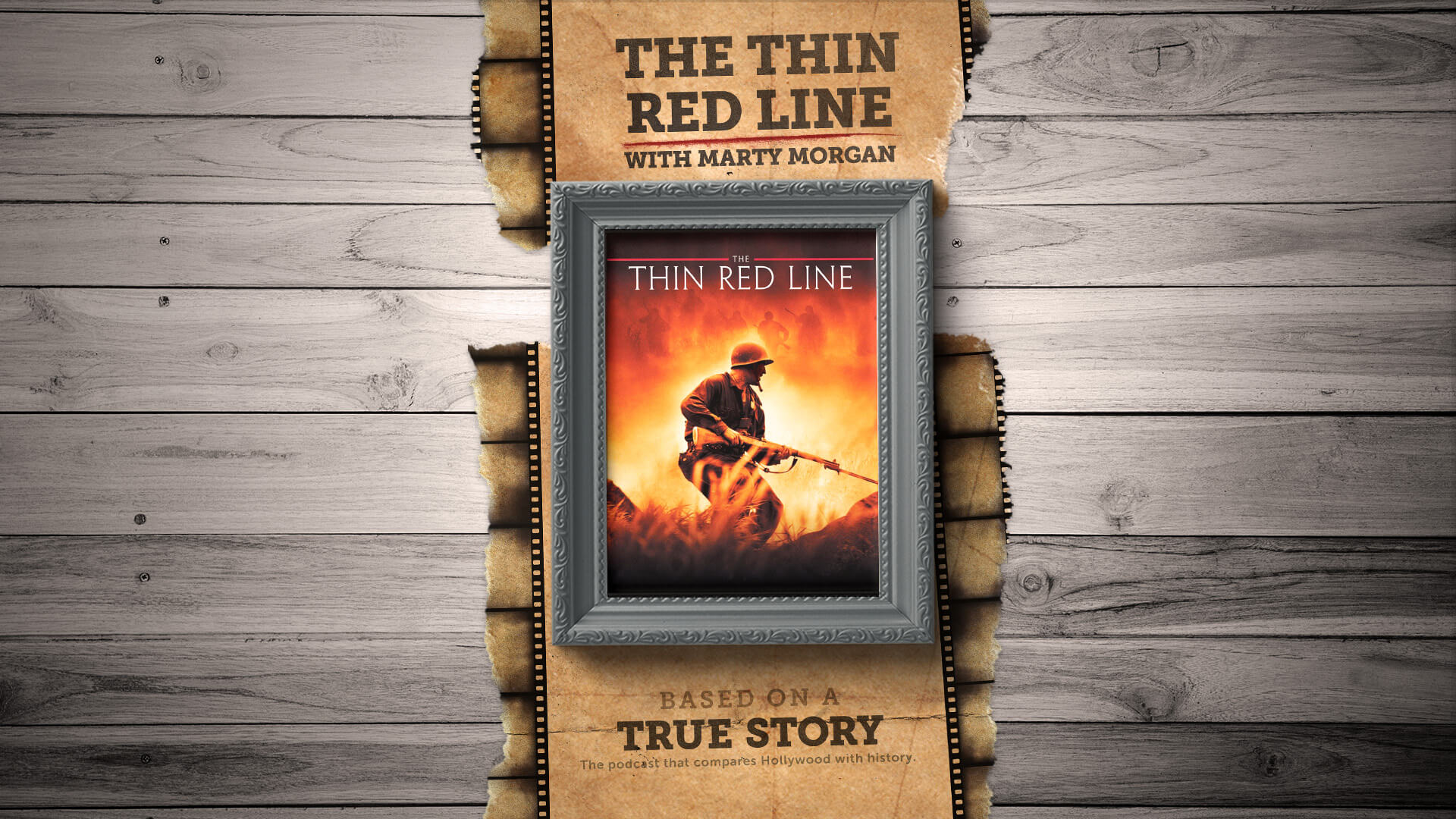BOATS TODAY (JULY 24, 1969/2024) — Apollo 11 splashed down exactly 55 years ago, so today we’ll wrap up our 3-part miniseries with the end of Apollo 11 mission.
Need to catch up?
- Apollo 11 Launch: https://links.boatspodcast.com/333
- Apollo 11 Lunar Landing: https://links.boatspodcast.com/334
- Apollo 11 Splashdown: https://links.boatspodcast.com/336*
Watch the Movie
- Movie: Find where First Man is streaming
- True Story: Watch historical coverage Apollo 11’s splashdown
Did you enjoy this episode? Help support the next one!
Disclaimer: Dan LeFebvre and/or Based on a True Story may earn commissions from qualifying purchases through our links on this page.
Transcript
Note: This transcript is automatically generated. Expect errors. Reference use only.
July 16th, 1969. Cape Kennedy, now Cape Canaveral, Florida.
Today’s event is about an hour and 20 minutes into the movie.
The scene starts on a sunny day with a bright blue sky dotted with a few fluffy clouds. In the foreground, a series of national flags wave proudly in the breeze. You can easily pick out the iconic stars and stripes of the United States, the Union Jack of the United Kingdom, and the blue and white stripes of Greece, among many others.
Behind the flags, a diverse crowd has gathered, dressed in a mix of formal and casual summer attire. They’re positioned on bleachers, with some standing and others sitting, all facing an impressive structure in the distance. This towering construction, surrounded by a vast expanse of water and lush green landscapes makes for a spectacular view.
If we hit play on the movie now, we can hear some sort of an announcement being broadcast over the PA system. The camera cuts to three astronauts. That tells us what that impressive structure was in the distance; a rocket, and these are the astronauts inside.
From the next scene, the crowd stands behind a row of TV cameras all on the green grass. Remember this is 1969, so imagine what a row of huge, clunky broadcast cameras on tripods would look like and that’s it. Scattered around, a few of the camera people decided to get a better angle by climbing on top of their TV vans.
All the people and cameras are facing the right side of the movie’s frame so they can’t see behind them, against the blue sky amidst the clouds are two little white dots that are moving irregularly across the sky.
And then we get to see what the two little white dots are as the camera shifts to a closeup view of them landing. They’re basically what amounts to huge jetpacks. One is Josh Brolin’s version of Agent K, the other is Will Smith’s version of Agent J.
Joining them on the ground is another guy, Michael Stuhlbarg’s character in the movie, Griffin. The three men, which are all fictional characters of course, are standing in the middle of the road. As viewers, the camera is in the middle of the road, too, looking at what looks like a military installation. Signs on either side of the road say “DELTA GATE: RESTRICTED AREA” along with the NASA logo. Beyond the signs are a couple military jeeps, which are driving toward the camera to greet the three newcomers.
This is all made up for the movie, of course, so we can move along a little faster to get back to this week’s historical event.
But, in case you don’t remember what happens in the movie, Griffin, K, and J are arrested as trespassers by the MPs that come to greet them on the road. The three are taken to the man in charge, the Colonel, his actual identity gets revealed later in the movie it’s a big spoiler. They convince the Colonel of their mission, so he agrees to let them try and continue saving the future. The way they’re doing that according to the movie is to attach a shield to the nose of Apollo 11 rocket.
That brings us back to the movie at about an hour and 25 minutes, and we’re inside now. Watching an old TV. On the TV, in black and white because this is a TV from 1969 after all, is the Apollo 11 rocket on the launchpad. We can see a family of six all gathered around the TV watching it intently.
And before long, we’re whisked to the launchpad, too, as the movie’s camera swirls around the large rocket attached to red scaffolding. That’s where, in the movie, the commanding officer helps J and K get to the top to achieve their goal.
Amid those fictional scenes, we also see scenes of more people watching the launch on TV. Of course, they don’t see what the astronauts do when Josh Brolin’s version of Agent K hops from the scaffolding to the top of the rocket to attach the Arch Net shield that will save the world.
Thankfully, he manages to get off the rocket and leave the area just as Apollo 11 blasts off. The camera cuts back to the original shot we started our segment with crowds of people watching the rocket in the distance with flags of the nations, waving in the wind.
Now, we can see the rocket in the distance throwing huge plumes of fire and smoke into the air. K, J, and the Colonel watch from the ground as the rocket makes its way into the sky. Then, in space, we can see the blue marble-shaped Earth in the background with the rocket in the foreground. It looks like some pieces break off of it as it passes the camera, which stays focused on the Arch Net deploying as the rocket continues past the camera and into the space beyond.
The true story behind this week’s event depicted in the movie Men in Black 3
Let’s start our fact-check on the true story by getting some of the obviously fictional things out of the way.
The Arch Net, time travel, the aliens, the concept of Men in Black—even if our inner conspiracy theorist can debate how realistic some of those things are, I think we can all agree that Men in Black 3’s interpretation of these things is completely fictional.
What really did happen, though, is the launch of Apollo 11.
Since the movie’s storyline is set around trying to avoid a fictional time traveling disaster, most of the real historical event isn’t really explained in the scene I described so if this could be a good movie to watch this week to catch the visuals of the Apollo 11 launch.
For example, remember when I mentioned the movie showing three astronauts inside the rocket? Well, even though it doesn’t say their names at that moment in the movie, if you look at the credits for the movie they did cast the astronauts correctly.
Neil Armstrong, Michael Collins, Buzz Aldrin were the three astronauts aboard Apollo 11 on July 16th, 1969. In the movie, they were played by Jared Johnston, Jonathan Drew, and Ken Arnold, respectively.
And if those names ring a bell, it’s probably because Apollo 11 was the mission that first landed humans on the moon. The movie doesn’t show that at all, of course, but that also happened this week in history on July 21st when Neil Armstrong took his now famous, “one small step for man, one giant leap for mankind.”
But, we’ll learn more about that next week.
With that said, the reason to mention it now is because the movie is correct to show such a massive audience around the world watching the event as it happened in real-time. A lot like what you’re doing right now with our own little Apollo 11 minisodes! Except for the whole real-time part, obviously, since it’s not 1969 and this isn’t a 195+ hour podcast haha, and in the true story the CBS coverage didn’t even run in real-time back in 1969.
The live television coverage started early this morning, July 16th, at 6:00 AM Eastern and concluded when the Apollo 11 mission did eight days later on July 24th. It’s nearly impossible to determine the exact number of viewers, but estimates are around the 600 million mark.
Of course, I have to throw out a huge historian’s caveat to this number.
Is that 300 million people watching the launch today, July 16th, then another 300 million watching Neil Armstrong and Buzz Aldrin walk on the moon a few days later? That’s just one of those little nitpicky things we’ll probably never know all the details, but it’s a historic moment of its own right, as they did what no one else had done on TV before.
I mean, not to take away from the history of Apollo 11…but the very first live trans-Atlantic broadcast happened via satellite in 1962, and it was just some pictures. Seven years later, they’re broadcasting live from the moon with roughly 16% of the world’s population watching.
But let’s go back to the launch itself, and another visual element the movie that it gets historically correct are the stands of people watching the launch with flags of the world’s nations against a bright, blue sky. In fact, there are photos of the real event, including one of then-President Lyndon B. Johnson and Vice President Spiro Agnew watching the launch. So, I’m guessing the filmmakers used those for reference.
The launch was planned for 9:32 AM Eastern time, making July 16th what most refer to as the start of the Apollo 11 mission.
As a little side note, the mission ended when the astronauts returned on July 24th—so we’ll circle back around next week to learn more about that side.
Here is NASA’s flight commentary from the Apollo 11 launch:
Note: Transcript automatically generated. Mistakes may happen.
00:01
T-Minus 15 seconds.
Guidance is internal
12
11
10
9
Ignition sequence start
6
5
4
3
2
1
0
All engine running
Liftoff
We have liftoff 32 minutes past the hour
Liftoff on Apollo 11.
Tower cleared.
00:30
Program Neil Armstrong reporting the roll and pitch program which puts Apollo 11 on a proper heading
00:46
Plus 30 seconds
00:50
for all complete and efficient programming
01:03
one Bravo is a aboard control mode
01:12
altitude two miles
01:20
you’re good at one minute downrange one mile altitude three four miles now velocity 2195 feet per second
01:51
we’re through the region of maximum dynamic pressure now
02:02
eight miles downrange 12 miles high velocity 4000 feet per second
02:09
standby for mode one Charlie Mark mode one Charlie
02:17
Cliff Charlesworth taking a staging status
02:20
here’s the new our goal for staging.
02:34
inboard engines
02:47
downrange 35 Miles 30 Miles high standing by for the outboard engine cut down now
03:02
and ignition
The last visual I wanted to point out from today’s movie is another one that’s pretty accurate: The rocket.
Just like the astronauts and the launch itself, the movie doesn’t focus on it, but visually we can see the filmmakers did a pretty good job replicating the Saturn V rocket that really did launch Apollo 11 into space. It’s a large white rocket with black panels and red “USA” writing at the bottom with the full “United States” stacked vertically along the rocket’s middle.
If you’re familiar with rocket launches, it’s probably not a surprise that the red scaffolding alongside the rocket was real, too. Well, I described it as scaffolding because it’s not really a building but a number of pipes and, well, it looks like scaffolding, haha!
And maybe that’s why a lot of people think it’s what holds the rocket up before it launches, but that’s not really true. It’s also not really scaffolding.
It’s called the Launch Umbilical Tower, or LUT, and at 380 feet tall, the LUT was designed with nine swing arms or gantries that allow people to service the 363-foot-tall Saturn V rocket while it’s on the launch pad. That’s about 116 meters tall for the LUT and just under 111 meters for the Saturn V rocket height.
So while the movie’s storyline of having Agent K jump from one of the gantries to the command module to attach the Arch Net device isn’t very realistic—technically those gantries are swing arms for a reason—they’re both designed to allow people access to the rocket as well as being able to swing away for launch—which seems to be what it’s starting to do in the movie as K makes his jump.
Share this:
- Click to share on Twitter (Opens in new window)
- Click to share on Facebook (Opens in new window)
- Click to share on Reddit (Opens in new window)
- Click to share on Pocket (Opens in new window)
- Click to share on LinkedIn (Opens in new window)
- Click to share on WhatsApp (Opens in new window)
- Click to share on Telegram (Opens in new window)
- Click to email a link to a friend (Opens in new window)
- Click to print (Opens in new window)



